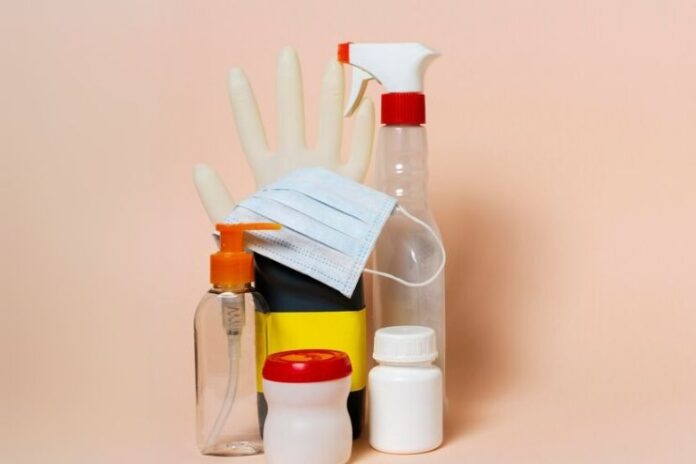Affiliate Disclaimer
Some links in this article are affiliate links. We may earn a small commission if you make a purchase through these links, at no extra cost to you. We only recommend products we find useful to our readersMany everyday household items contain hidden toxins that could pose significant health risks. Products like bleaches, oven cleaners, pest control sprays, and gardening chemicals often harbor chemicals that can cause harm if inhaled, ingested, or touched.
Researchers on environmental health warn of the growing negative contribution of poor indoor air quality to human health and well-being. Rising indoor air pollutant levels are generally associated with home products that, instead of increasing comfort, poison the home environment with excess chemical content and poor ventilation under high temperatures and humidity.
Disappointingly, World Health Organization (WHO) figures say that every year, about 3.8 million people die from diseases caused by exposure to harmful indoor air. Such statistics present a clear and urgent necessity to address toxin exposure within homes, as this can save lives.
Keeping dangerous products away from children and following precautions can make a safer home. The first step to protecting your family from hidden and prolonged health damage is identifying harmful chemicals in common everyday items.
Read More: How to Create a Healthier Home Environment Today
Health Impact of Household Toxins
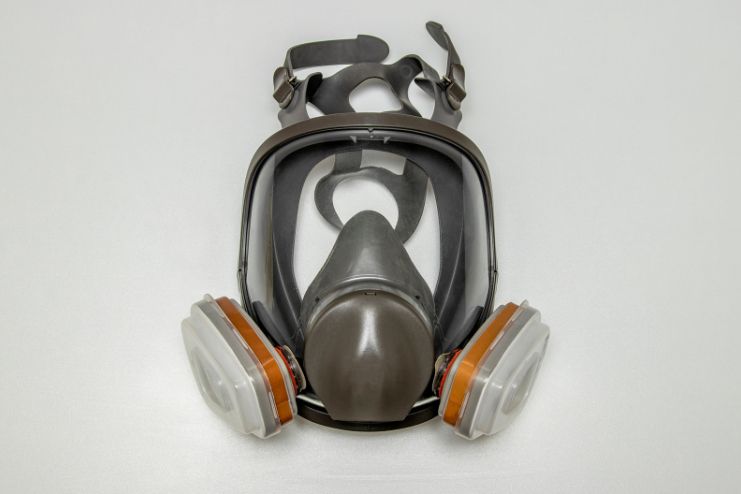
Studies show that household chemicals harm the environment and human health. While the European Union has banned many dangerous chemicals, others remain legal or inadequately controlled in developing countries. Even in the United States, just a few of these chemicals are regulated or prohibited.
Air fresheners, insecticides, pesticides, plastics, and cosmetics are all ubiquitous household products, but they can offer major health hazards. These commonly used products frequently contain harmful compounds that can harm human health. Let’s look at some of the health problems caused by exposure to these household toxins.
Short-term Effects:
- Cleaning supplies and household products containing VOCs and other harmful chemicals can cause immediate health issues such as headaches, dizziness, and nausea.
- Prolonged exposure may lead to respiratory problems, throat irritation, and coughing, especially in poorly ventilated spaces.
- Skin irritation and allergic reactions are common when these products come into direct contact with the skin.
Long-term Effects:
- Prolonged exposure to household toxins, including VOCs, is linked to hormonal disruptions, increasing the risk of reproductive issues.
- Studies associate long-term exposure with the development of chronic illnesses such as asthma, bronchitis, and occupational asthma.
- Certain chemicals in cleaning supplies, like formaldehyde and benzene, are classified as carcinogens and can increase cancer risks over time.
Vulnerable Populations:
- Children are more susceptible due to their developing respiratory and immune systems and their tendency to explore by touching or ingesting household items.
- Pregnant women face higher risks as exposure to toxins can affect fetal development.
- The elderly, especially those with pre-existing respiratory or chronic health conditions, are at greater risk of adverse effects.
Switching to safe alternatives to toxic products, such as natural cleaners and low-VOC options, can significantly reduce these health risks and create a healthier living environment.
The Hidden Toxins in Your Home
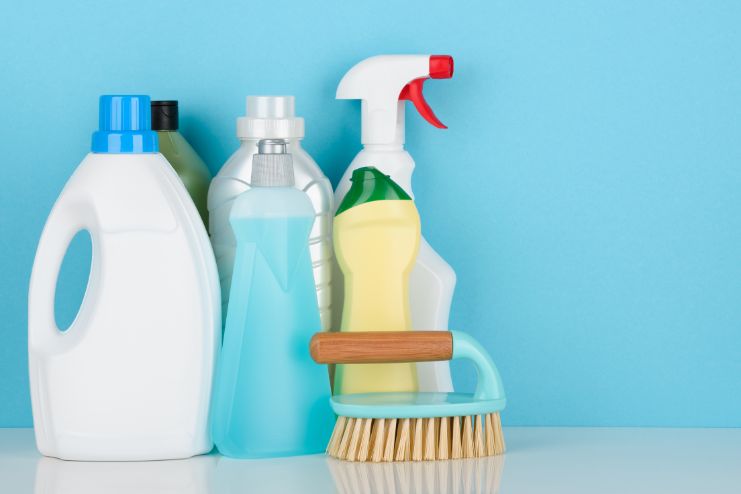
There are many toxins in our household that we unknowingly feel comfortable around. Awareness of these hidden toxins in homes can help you make safer choices for a healthier home environment.
Cleaning Products
Many cleaning supplies contain harmful chemicals like ammonia, bleach, and volatile organic compounds (VOCs). These may irritate the eyes, skin, and lungs, especially in poorly ventilated spaces. To reduce exposure, replace them with natural or eco-friendly alternatives.
Personal Care Products
Everyday items like shampoos, lotions, and deodorants may include harmful ingredients such as parabens, sulfates, and synthetic fragrances. These chemicals can disrupt hormones and irritate sensitive skin. Switch to products with natural ingredients that can help protect your health.
Plastic Containers
Plastic storage containers may release toxic chemicals like BPA and phthalates into your food and drinks, particularly when heated. To minimize risks, use glass or stainless-steel containers instead of plastic.
Non-Stick Cookware
Cookware coated with non-stick materials often contains PFOA and PFAS chemicals, which can release harmful toxins when overheated. Use cast iron or stainless-steel cookware instead.
Air Fresheners and Candles
While they create a pleasant scent, many air fresheners and candles emit toxic fumes from paraffin wax and synthetic fragrances. Consider natural alternatives like beeswax or soy candles and essential oil diffusers.
Paints and Furniture
Paints, varnishes, and new furniture can, over time, release formaldehyde and other VOCs into the air. To improve indoor air quality, ensure proper ventilation and choose low-VOC or VOC-free products.
Safe Alternatives for a Toxin-Free Home
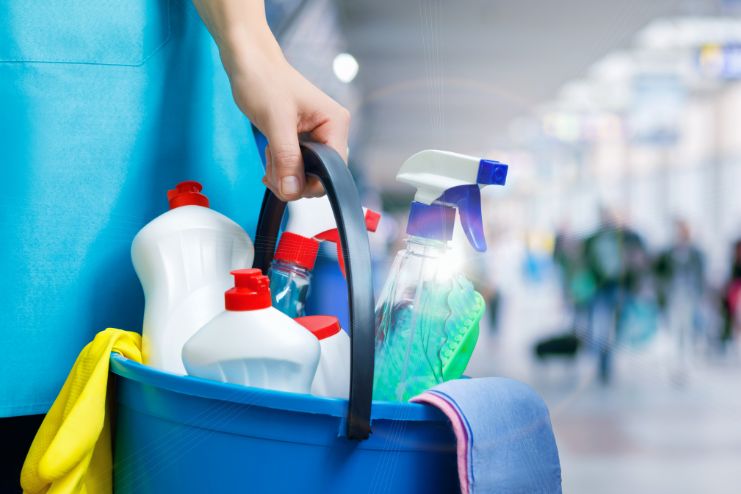
DIY Cleaning Solutions:
Use basic ingredients like vinegar, baking soda, and lemon to make your own non-toxic cleaning solutions. Mix vinegar and water to make a natural all-purpose cleaner; to remove stubborn stains, mix baking soda and water. These alternatives do not include any dangerous chemicals and work well.
Eco-Friendly Household Products:
Switch to eco-friendly household products and personal care items from trusted brands. Look for certifications like “Green Seal” or “EcoLogo” to ensure the products are safe, sustainable, and free from harmful toxins such as parabens, VOCs, and synthetic fragrances.
Safer Food Storage Options:
Use glass or stainless-steel containers instead of plastic ones. These materials don’t contain dangerous chemicals like phthalates and BPA, which can seep into food, especially when heated.
Improve Air Quality:
Invest in an air purifier to improve the quality of the air indoors by eliminating allergens and VOCs. As an alternative, include indoor plants that naturally remove pollutants from the air, like peace lilies, snake plants, or spider plants.
How to Identify Harmful Ingredients
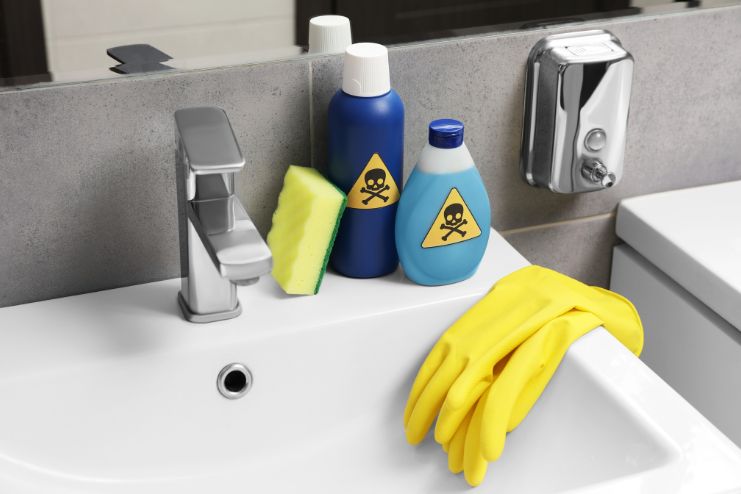
Most chemical goods include danger symbols that indicate whether a compound is toxic and in what way. Chemical products typically provide instructions on how to use them safely; it is critical to read and follow this advice.
Labels occasionally provide information about the source, allowing you to seek additional guidance. Here are some suggestions for identifying dangerous substances in household items.
Tips for Reading Labels:
- Carefully examine product labels and follow toxin-free home tips to create a safer environment. Words like “fragrance” are often used to hide a mix of undisclosed chemicals, some of which can be harmful.
- Avoid ingredients like parabens, which are preservatives linked to hormonal disruptions, commonly listed as methylparaben or propylparaben.
- Watch out for VOCs (volatile organic compounds), especially in cleaning products, furniture, and paint. Exposure to VOCs in furniture and paint can harm indoor air quality and pose health risks.
Apps and Resources for Checking Product Safety:
- Visit reputable organizations such as the Environmental Working Group (EWG) or the Campaign for Safe Cosmetics to explore lists of toxin-free products and guidelines.
- Use tools like the EWG’s Skin Deep database to check the safety of ingredients in personal care This platform rates products and explains the potential risks associated with each component.
- The Think Dirty app is another excellent resource. Users can scan a product’s barcode for safety ratings and detailed ingredient information.
Steps to Detox Your Home

Clear your home of harmful chemicals, such as old cleaning agents, synthetic carpets, or plastic containers. Replace old home items gradually to avoid overwhelming yourself. Follow these steps to detox your home and ensure a safer, healthier living environment.
Steps to Detox Your Kitchen
The kitchen is an excellent place to begin detoxifying your home because it can improve your health. Many common kitchen goods may contain dangerous chemicals, and adopting minor, focused modifications can drastically minimize toxin exposure. This is a step-by-step approach for removing toxins from your kitchen:
- Plastic Food Containers: Replace plastic food containers with glass or stainless steel.
- Non-Stick Cookware: Avoid using non-stick pans, which contain harmful chemicals like PFOA and PFAS. Instead, use stainless steel, cast iron, or ceramic cookware, which are safer alternatives.
- Cleaning Products: Check the labels on your cleaning supplies. Replace products containing VOCs, ammonia, or bleach with natural alternatives like vinegar, baking soda, or eco-friendly brands.
- Fresh Produce Storage: Store fruits and vegetables in breathable, toxin-free produce bags instead of plastic bags. This keeps them fresh without exposing them to chemicals.
- Water Filtration: Install a water filter to remove potential contaminants such as lead, chlorine, or pesticides from your drinking water.
- Air Quality: Use a vent hood or open windows while cooking to improve ventilation and reduce indoor air pollution.
Steps to Detox Your Bathroom
The bathroom often contains various products with hidden toxins, making it a critical space to detox. Reducing harmful chemicals here can significantly benefit your skin, respiratory health, and overall well-being. Follow these steps:
- Personal Care Products: Check labels on shampoos, lotions, and soaps. Replace products containing parabens, sulfates, synthetic fragrances, and phthalates with natural, organic alternatives.
- Cleaning Supplies: Swap chemical-laden bathroom cleaners for natural options like vinegar and baking soda. These are effective at cleaning surfaces without releasing VOCs.
- Plastic Packaging: Replace single-use plastic bottles with reusable glass or stainless-steel dispensers to reduce exposure to microplastics and toxins.
- Toiletries: Choose toxin-free toothpaste and deodorants. Avoid options with triclosan, artificial colors, or synthetic fragrances.
- Ventilation: Install an exhaust fan or keep windows open to reduce humidity, which prevents mold growth and improves air quality.
Steps to Detox Your Bedroom
The bedroom is where you spend a third of your life, so ensuring it’s toxin-free is essential for good sleep and overall health. Here’s how:
- Bedding: Replace synthetic bedding with organic cotton, wool, or bamboo fabrics that are free from harmful dyes and pesticides.
- Mattress: Choose a natural mattress made of organic materials, avoiding flame retardants and other harmful chemicals.
- Air Quality: Use an air purifier or add air-filtering plants like snake plants or peace lilies to remove toxins and improve sleep quality.
- Furniture: Avoid furniture made with pressed wood or particleboard, which can release formaldehyde. Opt for solid wood or certified non-toxic materials.
- Decluttering: Remove unnecessary items that collect dust and may release chemicals over time, such as synthetic fabrics or plastic decorations.
Steps to Detox Your Living Room
The living room is a central hub in your home, often filled with items that emit VOCs and other harmful chemicals. Detox it step by step for a healthier space:
- Furniture: Replace furniture with natural or non-toxic materials, and avoid upholstery treated with flame retardants.
- Rugs and Carpets: Swap synthetic rugs for natural fiber options like wool or jute. Vacuum regularly to minimize dust and allergens.
- Air Fresheners: Avoid synthetic air fresheners and candles made with paraffin wax. Instead, use essential oil diffusers or soy-based candles.
- Electronics: Keep electronics clean and dust-free, as dust can carry flame retardants and other toxins. Use an anti-static cloth for cleaning.
- Ventilation: Open windows regularly to allow fresh air in and reduce the buildup of indoor pollutants.
Detoxing these rooms step by step will create a safer, toxin-free living environment for you and your loved ones.
Conclusion
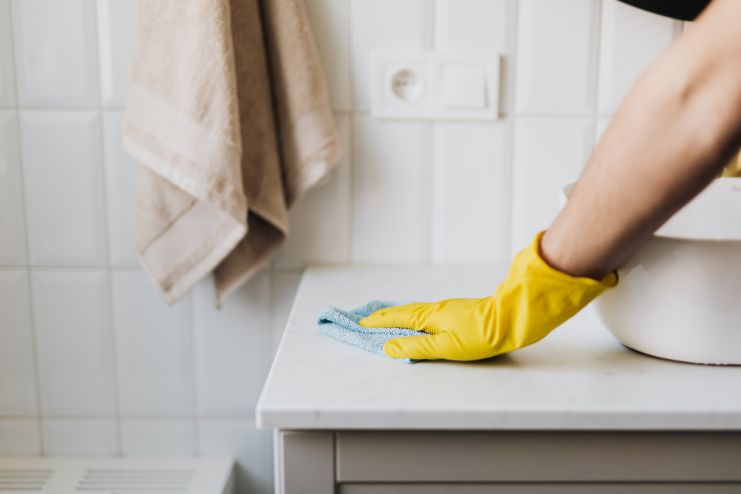
Keeping a healthy home does not have to be tedious and overwhelming. There are many preventive steps you can take to keep your home toxin-free. By designing and maintaining our homes without dangerous toxins, the chances of these problems can indeed be lowered.
Gradually switching to safer, non-toxic cleaning products and materials provides a barrier for the family against harmful chemicals. Therefore, these steps ensure peace of mind for all who dwell within, knowing it functions as a safe, healthy haven.
References
- https://www.betterhealth.vic.gov.au/health/healthyliving/Chemicals-in-the-home
- https://www.housebeautiful.com/lifestyle/cleaning-tips/tips/a2/dangerous-household-items-dupe
- https://raisingchildren.net.au/babies/safety/poisons/household-poisons
- https://environbuzz.com/protecting-your-family-and-the-planet-how-to-identify-and-avoid-harmful-chemicals-in-household-products
- https://newsinhealth.nih.gov/2016/12/making-healthier-home
- https://ecology.wa.gov/waste-toxics/community-waste-toxics/at-home
- https://www.who.int/news-room/fact-sheets/detail/household-air-pollution-and-health
- https://www.who.int/health-topics/air-pollution#tab=tab_2
- https://memorialhermann.org/health-wellness/health/toxins-in-your-home
- https://pmc.ncbi.nlm.nih.gov/articles/PMC9937639/
- https://www.lung.org/clean-air/indoor-air/indoor-air-pollutants/cleaning-supplies-household-chem
- https://ifrafragrance.org/priorities/ingredients/ifra-transparency-list
- https://www.nytimes.com/2023/02/15/well/live/personal-care-products-chemicals.html
- https://hungheeenergy.com/blogs/resources/non-toxic-home-tips
- https://www.webmd.com/a-to-z-guides/features/affordable-ways-to-make-home-safer
- https://www.ewg.org/news-insights/news/2024/01/7-ways-detox-your-home-and-keep-it-clean-year-round
- https://www.hgtv.com/lifestyle/clean-and-organize/detox-your-home-pictures
In this Article












